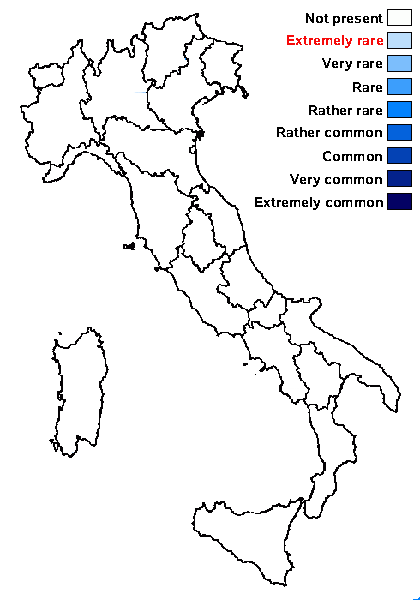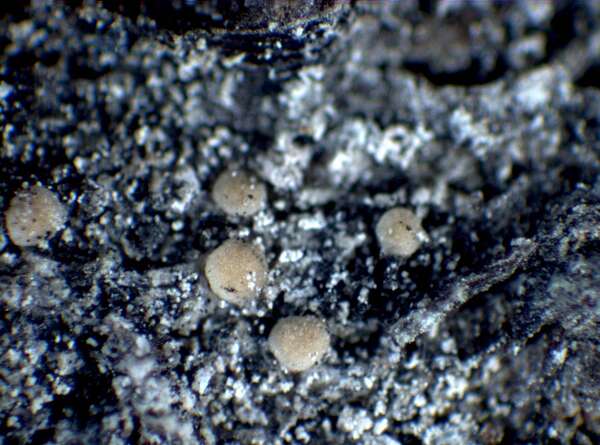Biatora vacciniicola (Tønsberg) Printzen
Bibl. Lichenol., 60: 142, 1995 . Basionym: Lecidea vacciniicola Tønsberg - Sommerfeltia, 14: 184, 1992
Synonyms: Myrionora vacciniicola (Tønsberg) S.Y. Kondr.
Distribution:
Description: Thallus crustose, endo- to episubstratic, often forming rounded, to c. 1 cm wide patches which later coalesce into several cm wide areas, sorediate; esorediate areoles, when present, inconspicuous, greyish to greenish, mostly discrete, more or less rounded, convex, up to 0.2 mm wide; soralia greyish yellow-white, pale green or pale yellowish green, bursting from the substrate or from the areoles, more or less well-delimited and punctiform when young, later diffuse and forming a sorediate, subleprose crust; soredia farinose, 12-25(-30) μm in diam. Apothecia rare, biatorine, 0.15-0.3(-0.4) mm across, beige to ochre-brown, more or less rounded, adnate, with a flat to slightly convex disc and a thin, usually inapparent, very soon excluded proper margin. Proper exciple poorly developed, of radiating hyphae, containing crystals of gyrophoric acid; epithecium colourless, non-granular, scarcely distinct from the hymenium; hymenium colourless, with crystals of gyrophoric acid reacting C+ pink, 25-40 μm high, I-; paraphyses coherent, simple to sparingly branched, 1-2.5 μm thick at mid-level, often widening upwards, the apical cells up to 6 μm wide; hypothecium colourless, often with yellow-brown granules, I-, 25-60 µm high, poorly differentiated from the subhymenium. Asci 8-spored, clavate, with a K/I+ blue apical dome penetrated by a narrow, K/I– apical cushion surrounded by a narrow, deeply K/I+ blue zone, the wall K/I- but surrounded by an I+ red-brown, K/I+ blue outer layer, the ocular chamber relatively small, Biatora-type, 25-30 x 7-8 µm. Ascospores 1-celled (rarely 1-septate), hyaline, ellipsoid or oblong, rarely slightly curved, (7.5-)9-10(-14) x 2.3-4 μm. Photobiont chlorococcoid. Spot tests: thallus (soredia) and apothecial sections K-, C+ pink, KC+ pink, P-. Chemistry: gyrophoric acid and traces of lecanoric acid.Note: on bark of various trees, mostly near the base, and on branches of dwarf shrubs, often with B. subduplex; from the Alps there are only a few scattered records, all outside the Italian territory. To be looked for in the Alps.
Growth form: Crustose
Substrata: bark
Photobiont: green algae other than Trentepohlia
Reproductive strategy: mainly asexual, by soredia, or soredia-like structures (e.g. blastidia)

Predictive model
Growth form: Crustose
Substrata: bark
Photobiont: green algae other than Trentepohlia
Reproductive strategy: mainly asexual, by soredia, or soredia-like structures (e.g. blastidia)

Predictive model
 INDEX FUNGORUM
INDEX FUNGORUM
 GBIF
GBIF




